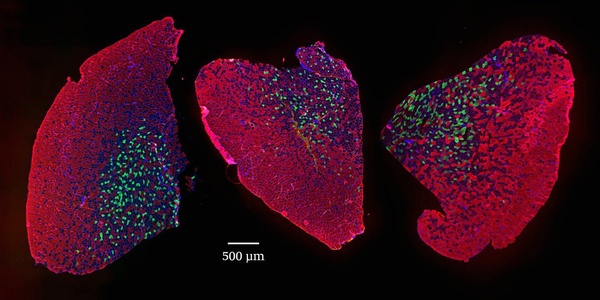Muscles shrink and their strength dwindles as we age. When that is excessive, the condition is called sarcopenia, and it affects every third person over the age of 80, reducing mobility, autonomy and quality of life.
There may be hope in the form of a well-known drug, Rapamycin, that can delay the progression of age-related muscle weakness.
The causes of sarcopenia are diverse, ranging from altered muscle metabolism to changes in the nerves supplying muscles. Researchers led by Professor Markus Rüegg from University of Basel's Biozentrum have discovered that mTORC1 also contributes to sarcopenia and its suppression with the well-known drug rapamycin slows age-related muscle wasting.

Muscle size decreases at high age and is preserved by rapamycin treatment (from left to right: mouse muscle cross sections from adult, old and rapamycin treated old mice). Image: University of Basel, Biozentrum
The downside; the study was in mice, and mice are not little people. They can only exclude benefit or harm in humans, so studies in animals models can only ever be considered exploratory, just like statistical correlation.
So the benefits to humans are not yet established but the researchers also demonstrated that in mice permanently activating mTORC1 in skeletal muscle accelerates muscle aging.
Since there is currently no effective pharmacological therapy to treat sarcopenia, the study provides hope that it may be possible to slow down age-related muscle wasting with treatments that suppress mTORC1, and thereby extend the autonomy and life quality of elderly people.
To help the scientific community further investigate how gene expression in skeletal muscle changes during aging or in response to rapamycin treatment, they developed the user-friendly web application, SarcoAtlas, which is supported by sciCORE, the Center for Scientific Computing at the University of Basel.





Comments